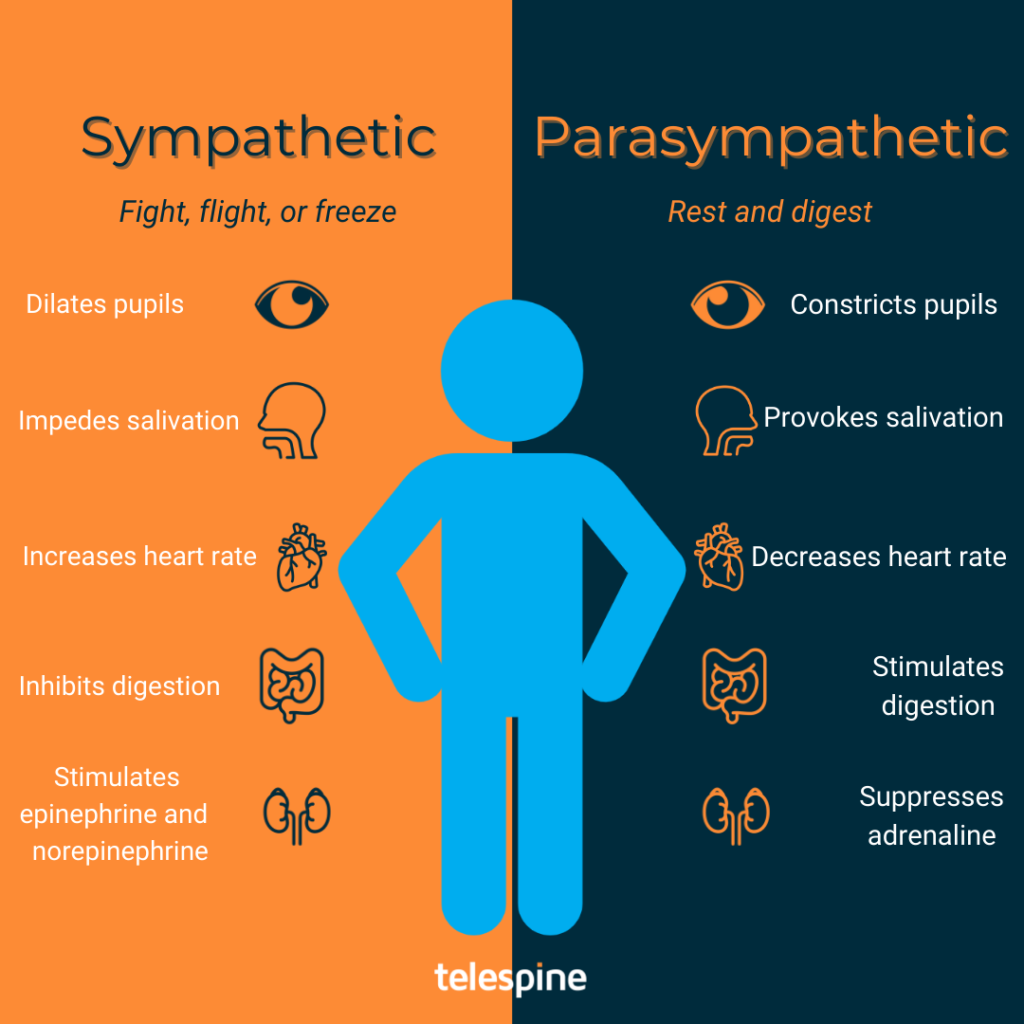Why You Should Know About the Vagus Nerve
Stress impacts everyone at different points in their life. As society becomes more aware of the impact unmanaged stress has on people, they are being shown countless ways to help decrease their stress levels and improve their health. With so many different treatments and interventions for stress and chronic pain, how does it feel knowing there’s a powerful tool located right inside of you that can help?
What is this tool? It’s a powerful nerve called the vagus nerve. When activated, it can have profound effects on your nervous system and help combat common conditions like stress and chronic pain. You can get vagus nerve video exercises and help from an expert by signing up for an Orbit account here.
What is the vagus nerve?
The vagus nerve has been deemed the key to wellbeing. The vagus nerve is a cranial nerve that originates in the brain stem and travels down to the abdomen. Vagus in Latin means “wandering.” This nerve quite literally wanders throughout the body carrying important messages of calm and ease.

Why is the vagus nerve important?
The body is innately intelligent, constantly performing vital tasks that don’t require any thought behind them. When people tense up when they drop and break a glass, or feel calm and relaxed after a yoga class, their bodies are being triggered to respond to both internal and external stimuli through something called their autonomic nervous system.
The autonomic nervous system keeps people alive. There are two main divisions of the autonomic nervous system, responsible for vastly different functions. These divisions are called the parasympathetic nervous system and the sympathetic nervous system. When someone drops and breaks a glass and tenses up from being startled, this is a byproduct of their sympathetic nervous system firing off signals. The sympathetic nervous system prepares the body for fight or flight responses. When someone feels calm and relaxed after a yoga class, this is a byproduct of their parasympathetic nervous system firing off signals. The parasympathetic nervous system prepares the body for rest and digestion.
Being the main nerve of the parasympathetic nervous system, the vagus nerve handles several critical functions including digestion, heart rate, and blood pressure. There is evidence that vagus nerve stimulation also has anti-inflammatory effects on the body. (2)
When people experience chronic stress or pain, their sympathetic nervous system tends to be active for long periods. This can create pain, tension, and anxiety. This is why the vagus nerve is so important—it activates the opposing nervous system, the parasympathetic nervous system, to help bring the body into balance by relieving tension and allowing oneself to relax.
Get personalized video vagus nerve exercises and even the chance to talk to an expert (if you want) here.

How do you stimulate the nerve?
Meditation, chanting, humming, deep diaphragmatic breathing, and yoga have been shown to activate the vagus nerve. Equal part deep breathing and elongated exhale deep breathing was studied and proven to decrease perceived stress and improve decision-making capabilities. (1). What’s even more intriguing, studies have shown that the sheer experience of positive emotions and healthy social interactions improves vagal tone and, in turn, decreases stress. (3)
Now that you know more about the vagus nerve and why it should be a critical part of your healing toolkit, follow these practices below to experience the benefits for yourself!
4:8 Breath Practice
Slow-breathing with longer exhales stimulates the vagus nerve, that is why this technique works so well. Even a small amount of stress can cause a physical reaction in your body including an increased heart rate, shallow breathing, and increased muscle tension. By extending your exhale, you can calm your nerves, control your heart rate, and improve your decision-making abilities.
Try this breathing practice anytime you’d like to relax or calm down.
Step 1. Permit yourself to focus on only you for the next few minutes. Find a comfortable position in a quiet, safe space to settle into. You can sit or lie down for this exercise. If you’d like, you can close your eyes. Shift your focus to your breath and this moment.
Step 2. With your next breath, inhale through your nose and exhale through pursed lips. Continue breathing in through your nose and out through your mouth for the rest of this practice.
Step 3. On your next inhale, lengthen your inhale to the count of four and then exhale to the same count. Do this for 3 rounds.
Step 4. Now double the length of the exhale. Inhale for a count of 4. Exhale for a count of 8. Do this for the remainder of your practice.
Step. 5. When you’re ready to end your practice, wiggle your fingers and toes and allow your breath to come back to its normal pace.
Step. 6. Notice how you feel physically and mentally. Refer back to these steps the next time you want to practice your 4:8 breathing.
Humming Practice
To activate your vagus nerve with this practice, you’re going to slow your breathing and create a low hum during the exhale. The vibration created from humming signals the vagus nerve and creates a relaxation response. Whether you’re feeling shut down or overwhelmed, this exercise can help settle your nervous system and restore balance.
Step. 1. Wherever you’re at right now, take a moment to notice your body position. Take your time to find a position seated or standing that is aligned and comfortable.
Step. 2. We’re going to perform two rounds of humming. We’re going to inhale and on the exhale we’ll begin, then we’ll inhale again and perform it once more.
Step. 3. Inhale a full breath, and low hum as you exhale. Pause and let the next inhale come naturally.
Step 4. Inhale a full breath, and low hum as you exhale. Repeat this however many rounds feels best.
Step. 5. Now rest, and simply notice how your body feels. Take your time to notice your breath, any change in muscle tone, and how your thoughts can simply slow down for a moment.
Vagus Nerve Stimulation can help
Chronic pain and ongoing stress can really take a toll on your body. Vagus nerve suspension has been shown to impact collagen, arthritis, asthma, and many other elements of overall wellness. Practicing relaxation techniques that stimulate your vagus nerve can be a great tool on your path to improving your health. If you would like more information on how Telespine can help you develop relaxation techniques and reduce stress, please contact us.
Resources
- De Couck, M., Caers, R., Musch, L., Fliegauf, J., Giangreco, A., & Gidron, Y. (2019). How breathing can help you make better decisions: Two studies on the effects of breathing patterns on heart rate variability and decision-making in business cases. International Journal of Psychophysiology, 139, 1-9. doi:10.1016/j.ijpsycho.2019.02.011https://www.sciencedirect.com/science/article/abs/pii/S0167876018303258
- Gerritsen, R. J., & Band, G. P. (2018). Breath of life: The respiratory vagal stimulation model of contemplative activity. Frontiers in Human Neuroscience, 12. doi:10.3389/fnhum.2018.00397https://www.ncbi.nlm.nih.gov/pmc/articles/PMC6189422/
- Kok BE;Coffey KA;Cohn MA;Catalino LI;Vacharkulksemsuk T;Algoe SB;Brantley M;Fredrickson BL;. (n.d.). How positive emotions build physical health: Perceived positive social connections account for the upward spiral between positive emotions and vagal tone. Retrieved March 10, 2021, from https://pubmed.ncbi.nlm.nih.gov/23649562/
